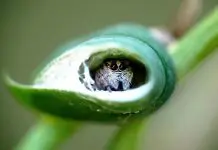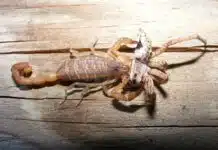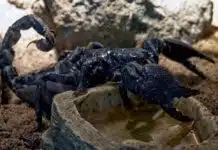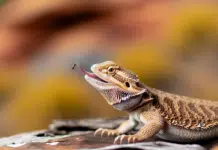A wild hedgehog lifespan can last up to 4 – 7 years for the larger ones, some with the abundance of food and good climates, they are able to live up to a good 16 years. Whereas for the smaller species, they are able to like anywhere from 2 – 5 years in average which is comparable to the lifespan of a mouse. If it is living in unfavorable conditions and the challenge to go without food during certain days, chances are it will only last about 1 – 3 years max.
For those hedgehogs that are kept as pets, they are reported to be able to live anywhere from 4 – 8 years, and some that are well taken care of are able to live up to 10 years and above!
With proper care given, they would have lived a better life as compared to being out in the wild facing uncertainties.
Hedgehogs aren’t really one of the biggest animals in the animal kingdom to be ranked at the top of their food chain, hence, as most other animals do, they would naturally have their own predators that they would fall prey to.
Generally, hedgehogs that live in forests would fall prey especially to birds such as owls and ferrets. Smaller hedgehogs would typically fall prey to four-legged animals such as wolves, foxes, and mongooses.
You would have guessed it, hedgehogs defend themselves by curling up into a ball as the underside of a hedgehog which is its belly is soft and delicate, it would curl and hide its head and limbs together. With its prickly quills raised, it becomes a ball full of spikes to protect themselves from any predators that would potentially eat or harm them.
Contents
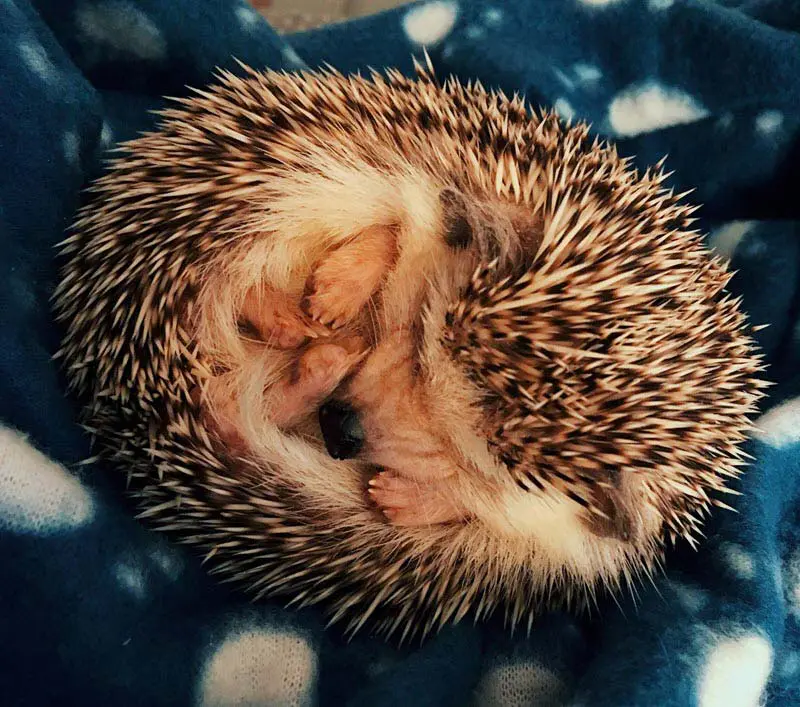
Hedgehog common illness
There are several common diseases that might cause any captive hedgehog’s death. Respiratory diseases, internal and external parasites may be the cause of it all.
Internal and external parasites
As like cats and dogs which are the more common animals to be kept as pets, it is no exception when it comes to hedgehogs as well. A hedgehog would be prone to carrying both internal and external parasites and some might not be visible to their owners at all.
When it comes to external parasites, we are able to tell it with our naked eyes, take a good hard look and you may sometimes see these small insects running around their body, forehead, face, and ears.
Most of the time, the contraction would be similar to cats and dogs, the hedgehog must have gotten infected through direct contact with hedgehogs that already has these insects in them, where they will jump from one host to another, else it would mean that the hygiene of the space or cage is not well-maintained.
Symptoms may include excessive scratching or rubbing against walls or any object they can find.
External Parasites
Fleas

Ticks
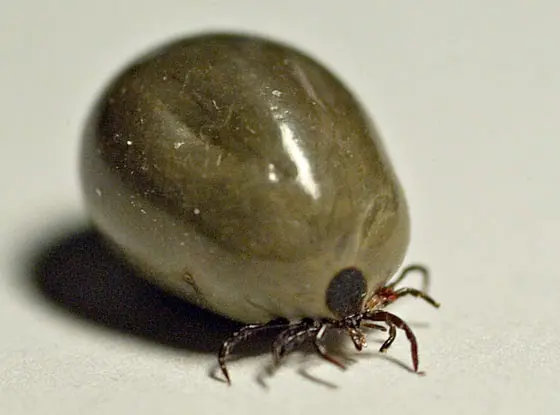
Mites
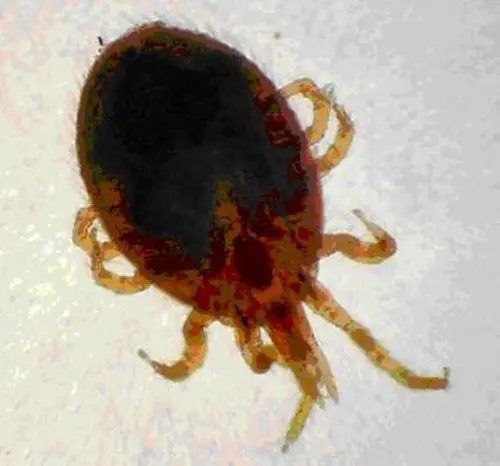
Internal Parasites
- Worms (Ringworms)
- Protozoa
It is much harder to detect a hedgehog with internal parasite as we are not able to detect through our sight. But the symptoms of contracting any internal parasite may include in hair loss, flaking or crusting of their skin, and missing spines around their body.
Ringworms are a common internal parasite which is also derived from fungal infections. Hence, it is important to ensure that you take time out to do proper housekeeping of the cage on a scheduled regular basis.
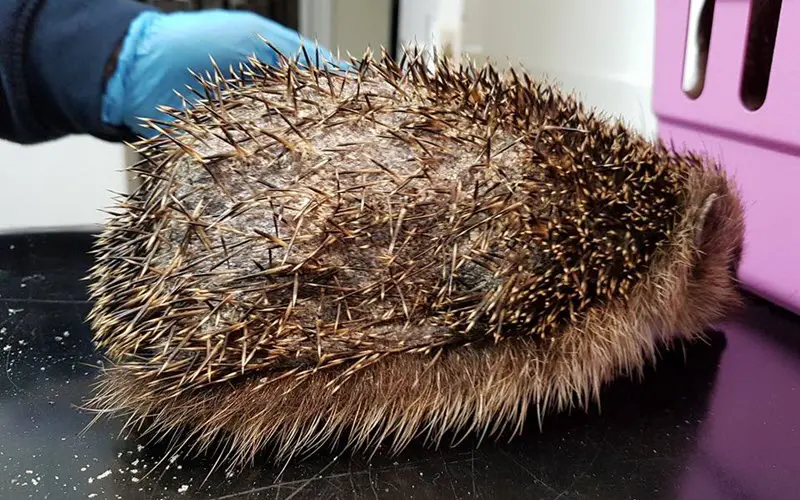
Hedgehog infected with ringworm
Cancer
A specific species of hedgehog, also known as the African pygmy hedgehog which is domesticated and captive bred or owned have been known to develop cancer over the years. This condition continues to affect around 90% of the African pygmy and till date, it is still a question mark as to why this particular species of hedgehog would develop cancer. In other cases, as long as a hedgehog has surpassed the age of 3 years onwards, they have the tendency to develop cancer and it may include their mouth, stomach, or intestinal tract. It is only through vets are we able to find out if our pet hedgehogs were to contract cancer, hence a qualified vet should be available around your area in case of emergency.
Gastrointestinal diseases
These diseases come about if the hedgehog were to ingest foreign objects or items which they may deem to be edible or a food source.
A common example that most hedgehog owners face is that they were to allow them to roam around in their house, hedgehogs are natural rummagers hence, as long as they are able to find any items or objects that can fit into their mouth, they would do it.
Carpet fibers are a common substance that is found in their intestines and may sometimes cause intestinal obstructions or blockages which may lead to vomiting, severe sluggishness, and a sudden loss of appetite and sometimes, death.
These are a couple of tell-tale signs which may indicate that your hedgehog may have consumed something foreign.
Urogenital Disease
Urogenital diseases are quite uncommon in most hedgehogs but may sometimes develop into bladder stones or infections among domesticated hedgehogs.
Hedgehogs that fall victim to these urogenital diseases will have problems to excrete out urine or there will be discoloration in their urine, this is extremely painful even to us humans.
Besides developing bladder infections or stones, they are also able to contract liver or kidney failure and damage. This would include symptoms such as vomiting, an increase in the production of urine, loss of appetite, and a significant drop in weight and anemia.
Most of these Urogenital diseases come about when there is poor hygiene to the cage or if the bedding is not changed in a timely manner and can sometimes also be the cause of their diet.
Only a vet would most probably be able to diagnose these kinds of conditions as they have to go through a series of tests with the right equipment which we do not have.
Respiratory Disease
Respiratory diseases such as pneumonia are the number disease that most pet hedgehogs would contract. If your hedgehog were to continue sneezing and have difficulties in their breathing, or discharge some form of nasal fluid these are signs that should not be missed.
Respiratory diseases are either caused by viral or bacterial whereby a hedgehog is able to contract it through affected hedgehogs who already have, stress due to the lack of space, or even bad air quality and dusty environments.
Symptoms to watch out
Be sure to keep a look out for certain symptoms or behavior that your hedgehog would not typically exhibit as it might very well be an indication that it is sick.
- Any form of nasal discharge or mucus from their nose or in their inner front limbs
- Prolong sneezing
- Breathing difficulties and respiratory noises e.g. wheezing, coughing, shortness of breath)
- Vocal changes
- Loss of appetite
- Lethargic or sluggish movements
- Sudden death
- Spines/hair loss
- Flaking skin
These are symptoms which should be enough to get your attention and warrant a visit to the vet to further assess the condition.
As long as you sense that something is not right, or your pet hedgehog is reacting somewhat differently than usual, you should pay attention to its diet, space, cage, and bring it to a vet to have it checked as soon as you can.
Do read up more on our hedgehog symptoms guide in order to better spot on or interpret which diseases your hedgehog is likely falling victim to, this would allow you to take any necessary action at the earliest stage before its condition worsens.
Hedgehog facts
There are several different types of Hedgehogs that can be found in the wild. These mammals can be found all over the world and make great companions as they tend to appeal to most people with their small frame and cute little pointy nose.
This animal is self-sufficient by its own despite being small and its seemingly delicate impression given off most of the time. Hedgehogs are generally not picky eaters and would eat almost anything they can find, from insects to vegetables, soft fruits, and birds’ eggs.
They are able to travel great lengths in search for food, even having to climb fences, walls, or even swim across the water just to get food.
Being a nocturnal creature, it minimizes the risks of it getting preyed at by its natural predators and would migrate from time to time to find a better shelter and food sources if they find it lacking at where they currently are.
As hedgehogs have made their way into the suburban regions, they have made home gardens a place that they can call home.
A simple and good stack of hay, twigs, or leaves sheltering a dry shed would be sufficient for them to rest and sleep in.
If they were to visit your garden someday, make sure they are warmly welcomed with a bowl of water and a bowl of dried cat food.
Help keep the environment safe for them by NOT using poisonous chemicals such as slug pellets where they will treat it as an edible food and poison themselves to death.
Types of Hedgehog Breeds
Four-toed Hedgehog or African Pygmy Hedgehog
Originating from the sub-saharan Central Africa, occupying grassy plains and fields, these species of hedgehog’s name is pretty self-explanatory as it has only 4 toes on each limb and they are rather small as compared to other hedgehog species, reaching a size of approximately 8 inches long. The African Pygmy hedgehog has a whiter toned body which allows its dark head more prominent and it has a clamorous and energetic behaviour overall.
European Hedgehog
Found only in certain parts of the Northern and Western European countries such as France, UK, Italy, and Spain, the European hedgehog is also known as the common hedgehog. Measuring up to 10 inches of length, it is mostly covered in brown-black. Wild European hedgehogs can typically live up to 10 years of age and they occupy the woody areas in the wild.
There are many other species of hedgehogs that are available in the wild and some are region specific, but the most commonly kept hedgehogs as pets are the European and the African pygmy hedgehog.
Hedgehog Characteristics
Hedgehogs by nature are blind and deaf upon birth. But as their organs and physical features develop, their eyes would slowly open and become more prominent, and they would be able to hear and see as they embark their life as a hedgehog.
Self-anointing is a common characteristics in certain animals where they masked their own odour to blend into the surroundings it is at, integrating itself with the environment.
Till this date, there has been no concrete evidence or studies able to conclude the reason behind them self-anointing. How does it work? Or rather how can you tell if your hedgehog is self-anointing?
Most of the time, they will create this foamy-like drool that is being concocted from its saliva either by gnawing or licking any object, thereafter it will contort its body to “apply” this “saliva” all around its body even at its spine!
This is a behavior that most young hoglets will exhibit as compared to adult hedgehogs, one reason that most people deduce is most probably them wanting to camouflage as they are being exposed to new smells, not wanting to be singled out or sniffed out by any potential predators.
By “applying” one’s own saliva it acts as a safety net to camouflage its own scent with a “new” scent. Whereas some would also argue that they would rather much prefer having their own body “fragrance” to smell like themselves.
Some of you may be surprise as to what a baby hedgehog is called? In the past, there has not been a specific term to call them, people would call them baby, young, pup, piglet, and so on.
Not until recently, the term “hoglet” is used to represent baby hedgehogs as it derives from the word “hog” and “let” which is quite similar as to how piglets got their name.
Hedgehog life cycle
Growing up, hedgehogs are generally able to live by themselves, unless if the female hedgehogs have just given birth as all mothers would, she would stay by her children to look after them.
Pregnant hedgehogs would usually carry their babies for approximately a month or so before giving birth to their young. This is also known as gestation. Each time, an array of baby hoglets usually around a litter size of 4 to 5 will be given birth.
Upon birth, a whole new life ahead these hoglets as there would be some that are weaned off their mother’s milk which makes feeding easier as it opens up plenty other options to choose from. For those that are still accustomed to feeding on their mother’s milk, they would follow their mother closely as she goes on adventures to forage food and shelter for her family.
As they begin to go on more trips, they are also learning the way of life in order to survive in the wild. Through this journey of nurturing these young hoglets by herself, the male hedgehog does not partake in any care for his young. The weaning phase typically takes up to 2 months or so, after which, they are ready to be introduced to other food sources.
Wild hedgehogs will eat almost anything that they are able to fit into their mouth. Food sources such as fruits, bread, leftover scraps, biscuit crumbs, leftover meat, carrion, insects, worms and mollusks.
As they do not have the luxury to expect food the next day, they would eat almost anything in order to survive. But if your hedgehog is lucky enough, it may be in your care and it is your responsibility to ensure that it is well-fed at all times.
Note that hoglets that are newborn should stay with their mom and it is ideal to have them feed on their mother’s milk for at least a month before beginning to introduce the new food other than milk.
In captivity, as we are able to take control of their diet, most of the time, it is best to feed them dry food as this helps them to retain their teeth and ensure that they have healthy gums.
There is a misconception when it comes to fruits, as fruits contain plenty of sugar, it should only be fed moderately else in some severe cases, they may result in being overweight or being diabetic. Monitoring your hedgehog’s weight is as important once it begins eating that you are feeding after its infancy stage.
6-month-old hoglets should always be fed on dry food, and depending on its frequency, if you feel that it is getting obese, you should cut on the per serving or the frequency of its meal time. After which, once it has entered its adolescent stage, feel free to either stick to dry food which is quite convenient, or you are adventurous enough, you may introduce food such as cooked lean meat, cooked scrambled eggs, live insects such as crickets or mealworms where you can find in most pet stores.
Fruits should not be fed more than once per week, avoid feeding it fruits with high natural sugar such as apples and bananas, also refrain from feeding them raisins and grapes as it may be poisonous to them. When it comes to vegetables, strictly NO starchy vegs such as carrots, sweet potatoes, potatoes, or corn. Instead, go for fresh cucumbers, tomatoes, green beans, or green peppers. See Hedgehog FAQ for a detailed list of food that they can or cannot eat.
Leafy vegetables have to be washed thoroughly to ensure that it is clean for them to eat. The above-mentioned food can be fed to them as it surpasses its 6 month time frame, trial and error works best when it comes to their food, but for convenience sake, if you are sticking to dry food, you should get a premium quality dried cat food for it and it is totally fine as it has all the nutrition an adult hedgehog would need.
After going on their little adventures, over the years as they age, the male hedgehogs would tend to seek out a partner to mate. Upon first impressions, they would snort towards each other and flee. If they were to bump into an angsty hedgehog and end up fighting, they would fight by charging towards their fellow hedgehog, head-butting each other in hopes to knock back the other.
But if they were to chance upon a potential soulmate, the male hedgehog will continuously circle around the female, getting its attention with regular snorting and snuffling. It is the male hedgehog’s way of gaining the female’s attention and at the same time, if his persistence pays off, she would accept him, else if it is an unsuccessful courtship, the female would wait for him to tire out before bolting off.
How do hedgehog breed?
Before commencement of breeding, to ensure that the males are above 6 months of age, and the female, at least a year old. As most other animals do, you should let your female hedgehog mature fully before introducing them to the males, else it would take a toll and cause unnecessary stress on their body.
If the female hedgehog were to undergo breeding while she is still developing and has not aged to an adult yet, the hormonal changes will conclude and exhaust their metabolism in a way where there are unfavorable side effects. Certain permanent damage such as body stun, developing of certain new diseases are irreversible.
As explained before, you may introduce a suitable male and female hedgehog to each other, after which, the male hedgehog will dance and go around the females in circles If the female is interested, she will respond to him and continue chasing each other around the enclosure or wherever they are.
This involves snorting, snuffling and circling around, don’t be surprised if you were to hear the noise intensify, this might mean that both of them are really interested in each other! Some courtship attempts may take up a prolonged period of time while others may end really quickly.
If the enclosure or cage has more than 1 male hedgehog inside, often there will be rivalry and males will be taking turns to claim alpha and ownership of the female, you would be able to witness headbutting and chasing a lot around the cage.
Once the victorious male has been decided, he will take him time to court the female and have her all by himself. This whole mating process will start as soon as the female hedgehog assumes into an unusual posture where her spikes are compressed, she will basically lay flat bottom with hind legs stretched fully, belly flat and her nose facing upwards.
The male hedgehog will then mount her by grabbing hold of her spikes with his teeth. Its mating behavior is quite similar to how dogs will mate.
Mating only takes up a couple of minutes, after which they will separate themselves from each other and in the wild, the role of the male hedgehog is done, he will be on his way and they will never meet again.
Even if they were to, it would be out of pure luck. If you would like to find out if your hedgehogs are right for breeding, or how would you induce them into breeding, you may move on to our comprehensive hedgehog breeding guide where I will run through every single step, increasing the chance of inducing your hedgehogs to breed without stressing them out.
Conclusion
Hedgehogs basically are able to live longer if they are well fed and take care of. Contrary to some saying that them living in the wild would prolong their lives, but in the wild, there are just simply too many unknown obstacles and challenges that the hedgehog might not be able to overcome at times.
In the wild, they have to live with the probability of starving for days or weeks before eating again, weather conditions are unpredictable, vulnerable to natural predators at all times. But who’s to say that if humans do not provide adequate care, they might as well be out roaming themselves.
Hedgehogs are susceptible to a wide range of diseases and there are tell-tale signs for you to notice and tend to it before it is too late. It is your responsibility to educate yourself and be as knowledgeable as you can be before getting a pet hedgehog.
Sure, baby hoglets are cute and adorable, but when it comes to breeding, special attention and care have to be given to the mother and she has to be of right age to be bred.
I hope this hedgehog care guide enriches you as a fellow hedgehog lover or even potential hedgehog keeper who is looking to get one sometime soon!
If there is any information that I have left out, or you think should be included, feel free to chime in the comments section and I will further improve this copy to make it more educational for readers out there! Cheers!

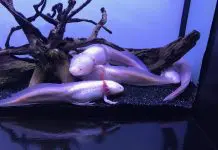

![Sick Axolotl, Fungus, Stress Symptoms [Axolotl Illness Guide 2025] Axolotl fungus](https://exopetguides.com/wp-content/uploads/2018/06/axolotl-218x150.jpg.webp)

